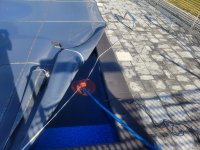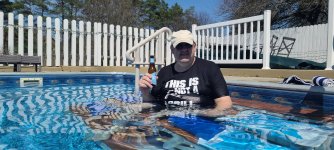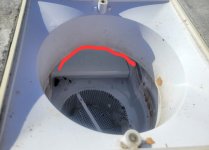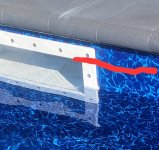Couple questions/observations:
I opened my pool and my CYA was between 30 and 40 so let’s just say 40. When I closed my pool it was closer to 70. I thought CYA didn’t go anywhere (I’ve read stories about draining a pool to get CYA down) so why did it go down over winter? I did dump a few inches before closing (almost to the bottom of the skimmer) and it did fill back up over winter, but does that really explain about a 30 point loss in CYA?
Is there any objective way to measure clarity? I can see the bottom of my pool at the 6ft end and I’m sure someone walking up that isn’t a TFP’er would say it’s clear, but it just looks a little dull to me. I’ll do another OCLT tonight but I did pass that after I SLAM’d it. I’m thinking I just got a false sense of completion.
Which brings me back to CYA. Is there any point in adding CYA at this point. Seems like it would just make SLAM’ing more costly (more chlorine). Is there a desired level of CYA for an opening SLAM? I retested today and I’m still between 30 & 40.
The good news is that my SWG is working. For some reason, the salt really dropped over winter. I put in two 50lb bags and got it up to around 3200ppm (per my test kit). Interesting thing is that the SWG did not recognize the increase in salt for about a day. It went from 2100 (too low, light on) to 2700 (the low point per the manual) pretty quickly but the light would still not go off. I was about to put another bag in but the next morning the SWG read over 3000ppm and the indicator light was off and the “generating” light was on. Patience Grasshopper.
I’ll start the heater in a couple weeks. It’s still too cold to swim here in S.E. MI.
I opened my pool and my CYA was between 30 and 40 so let’s just say 40. When I closed my pool it was closer to 70. I thought CYA didn’t go anywhere (I’ve read stories about draining a pool to get CYA down) so why did it go down over winter? I did dump a few inches before closing (almost to the bottom of the skimmer) and it did fill back up over winter, but does that really explain about a 30 point loss in CYA?
Is there any objective way to measure clarity? I can see the bottom of my pool at the 6ft end and I’m sure someone walking up that isn’t a TFP’er would say it’s clear, but it just looks a little dull to me. I’ll do another OCLT tonight but I did pass that after I SLAM’d it. I’m thinking I just got a false sense of completion.
Which brings me back to CYA. Is there any point in adding CYA at this point. Seems like it would just make SLAM’ing more costly (more chlorine). Is there a desired level of CYA for an opening SLAM? I retested today and I’m still between 30 & 40.
The good news is that my SWG is working. For some reason, the salt really dropped over winter. I put in two 50lb bags and got it up to around 3200ppm (per my test kit). Interesting thing is that the SWG did not recognize the increase in salt for about a day. It went from 2100 (too low, light on) to 2700 (the low point per the manual) pretty quickly but the light would still not go off. I was about to put another bag in but the next morning the SWG read over 3000ppm and the indicator light was off and the “generating” light was on. Patience Grasshopper.
I’ll start the heater in a couple weeks. It’s still too cold to swim here in S.E. MI.





